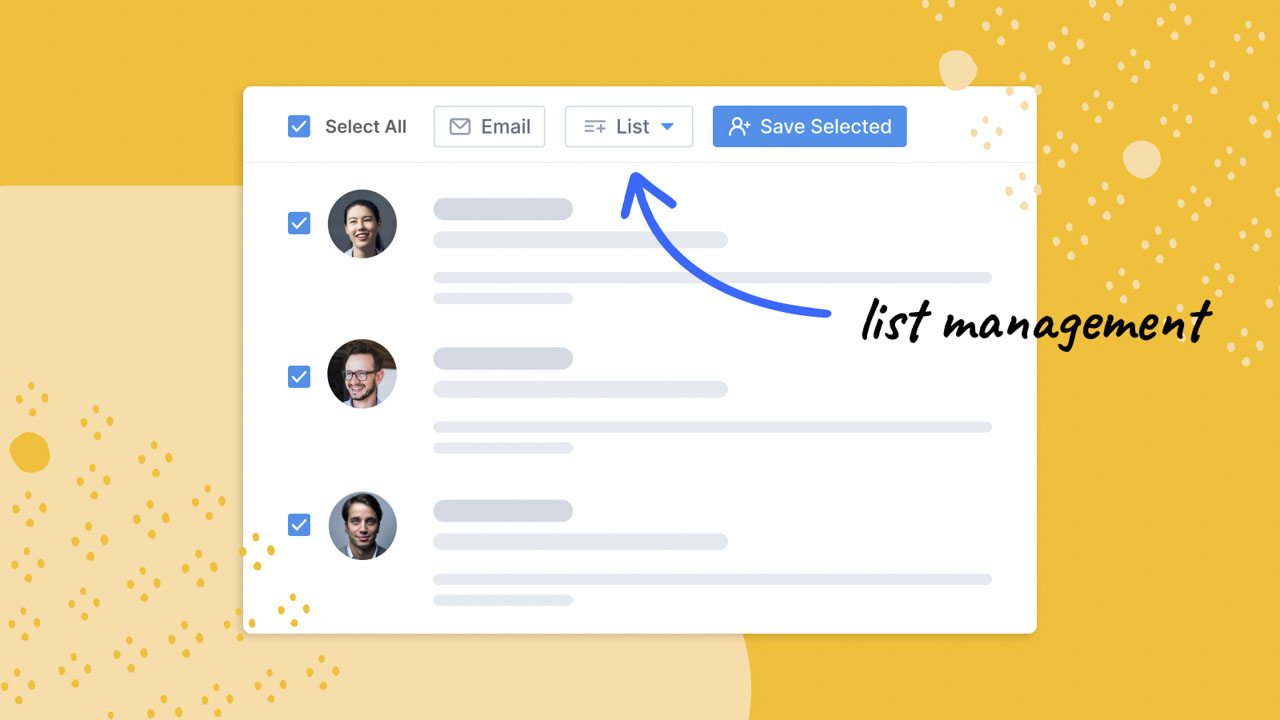Building an email list is like growing a garden.
The site of the garden is your email campaign. The website and content are your soil, the foundation of your list building efforts. Selecting which seeds to plant is similar to determining your buyer personas and the seeds that grow into plants are your subscribers.
In the context of gardening, email list management is the nurturing part of the process.
When caring for a garden, you need to visit your garden early and often. You need to check for weeds and pests, trim dead leaves, give your plants healthy doses of water, fertilizer and sunshine, all while using the right tools. Without regular upkeep, your garden could eventually wither and die.
That’s why it is similar to email list management. It requires a similar amount of care and attention.
Not only do you need to keep your subscribers happy and thriving, but you need to maintain proper list hygiene in order to have successful email marketing efforts.
In this blog post, you’ll learn how to manage your email list the right way to build long-lasting relationships with your subscribers.
[lwptoc]
What is Email List Management?
Email list management is how you manage and organize contacts in your mailing list. It includes:
- Collecting information about email subscribers
- Analyzing subscriber behavior
- Verifying and updating email addresses
- Scrubbing inactive subscribers
- Monitoring email deliverability
- Keeping costs down and ROI high
Think of email list management as a hygienic practice. It is all the back-end work that goes into making sure your email list is accurate and up-to-date.
Why is List Management Important?
Email is a direct portal to your target audience. It is one of the few, cost-effective marketing channels that can build an authentic connection with potential buyers. Making sure this connection remains untarnished should be one of a business’s top priorities.
Email list management practices do just that.
They help you maintain healthy relationships with your audience to breed effective marketing campaigns.
List management also impacts:
- Your sender reputation and how much trust customers place in your brand
- Your digital marketing metrics (i.e. click rates, bounce rates, and ROI)
- Your ability to re-engage email users and convert them into customers
- The efficiency and performance of sales and marketing teams
Good email list management breeds successful email marketing campaigns.
I mean, what good is a list with thousands of subscribers if less than half of them open your emails? Or, even worse, if subscribers send your emails straight to the trash or spam folder?
Managing your lists ensures that you’re spending your valuable time and resources with the right subscribers and boosting, rather than harming, your sender reputation.
Best Practices for Email List Management
Now that you have a more thorough understanding of email list management, let’s look at some crucial best practices.
Here are a few actionable tips to help you improve the hygiene of your contact list and boost engagement:
1. Cleanse your email data
Before you start on anything else, you need a clean email list to work from.
Start with cleansing and organizing your list data.
Although it may seem like a good strategy to collect and store as many email addresses as you can, unresponsive and/or inaccurate emails can negatively impact your targeted email campaigns.
The important thing to remember: data-cleansing is not a one-time activity. HubSpot reports that email marketing databases naturally decay by 22.5% every year. Unless you are refreshing your contact database regularly, your marketing strategy will become a dying asset.
Having accurate data will also keep you out of the spam folder. The lower your deliverability rates, the higher chance your emails will be considered junk mail. Get rid of invalid email addresses to reduce your bounce rates and keep your sender reputation intact.
2. Segment your subscriber list
A foolproof way to boost email engagement is with segmentation.
Segmenting your email list is when you separate subscribers into different categories based on a common characteristic (i.e. geographic location, interests, purchase history, intent). It is a personalization tactic that allows you to deliver more relevant email marketing to subscribers based on what you know about them as buyers.
It’s all about delivering content people actually want.
According to a study from Lyris, 39% of businesses that segmented their lists experienced high open rates, 28% experienced lower unsubscribe rates, and 24% experienced higher sales.
3. Re-engage inactive subscribers
Inactive subscribers are recipients of your emails who don’t engage. They don’t open your emails, click on links, or engage with any of your email content.
You need to design re-engagement strategies to reignite their interest in your product.
If a subscriber has been inactive for a while, try moving them to a segment of your list that sends out good offers and discounts, or try reducing the number of emails you send them per month.
Other strategies include making your subject lines and content more compelling, adding more personalization, or asking them how you can help and/or improve.
Regardless of how you choose to re-engage, it’s important to remember to do everything you can to reconnect with inactive subscribers before cutting them loose.
4. Greet new subscribers with a welcome email
When subscribers opt into your contact list, they have made a deliberate decision to fill out that form and they are eagerly expecting your next move.
A welcome email should be the first email they receive. It sets the stage for all future communications.
Here are some helpful ideas for developing your welcome email:
- Greet the subscriber by name. It is a perfect and easy way to personalize your message and hook them into what you have to say.
- Include next step instructions. Do you want them to download your app? Read your guidebook? Watch a video? Let them know in the welcome email!
- Offer a welcome gift. A 10% coupon, for example, can motivate them to make a purchase.
- Ask them to follow you on social media. Provide the links to your social accounts so they can see all of your important updates.
Studies show that the average open rate for welcome emails is 82%. This is higher than nearly any other time. Don’t waste your first impressions with subscribers and make sure your welcome email is full of relevant and influential content.
5. Make it easy to unsubscribe
Maybe it seems a little counterintuitive to make it easy for your subscribers to opt-out of your emails, but you need to prioritize the user experience. You never want your subscribers to feel trapped in your mailing list. It can leave a very poor impression.
Not only is it a legal requirement under CAN-SPAM legislation, but including an ‘unsubscribe’ button in your bulk emails can help you avoid bounce issues and spam complaints.
Note: if you don’t currently have an unsubscribe form or link, you can use Google Mail Merge. Mail Merge offers unsubscribed user reports and data, as well!
Email List Management Software
A growing email list requires automation software. Manually segmenting and managing hundreds, even thousands, of email addresses is unsustainable and a massive time waster.
Email marketing software tools are powerful marketing solutions that have the potential to solve many of your pain points Here are some of the biggest advantages of email marketing software:
- Efficient email automation. Once you have your messaging fine-tuned, email marketing software can use automation to carry out management tasks for you. Tools like Apollo can automate the entire campaign process, from sorting subscribers into groups and executing marketing sequences to scheduling emails and creating analytics reports.
- Affordable expansion in your target market. Paired with a robust mailing list, email marketing software allows you to reach into a target market at a significantly lower cost than traditional outbound advertising outlets. And because your email list consists of subscribers who willingly opt-ed in, email marketing software can help you affordably capitalize on these opportunities.
- Platform integration. Software solutions, like Apollo, can seamlessly integrate with your CRM and other social platforms like LinkedIn. This reduces the amount of platform switching and manual data input that takes so much of a sales rep’s time and effort.
- Email templates. With email marketing software, you don’t have to start an email from scratch. Check out some helpful Apollo templates and email snippets.
- Reduced risks. The success of email campaigns can often come down to minute details. Email marketing software gives you A/B testing tools, detailed analytics and reports, and dependable data. All of these features help your outbound campaigns avoid critical mistakes and errors.
Email marketing campaigns have the potential to generate over 3800% ROI. The numbers don’t lie: email list management is as important as ever.
Don’t wait to optimize yours today.





